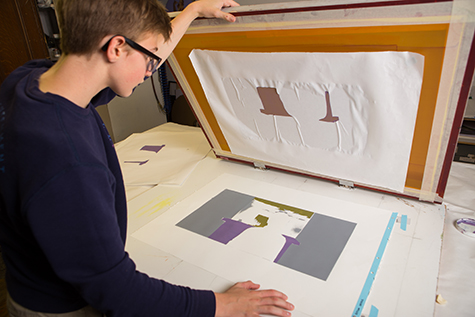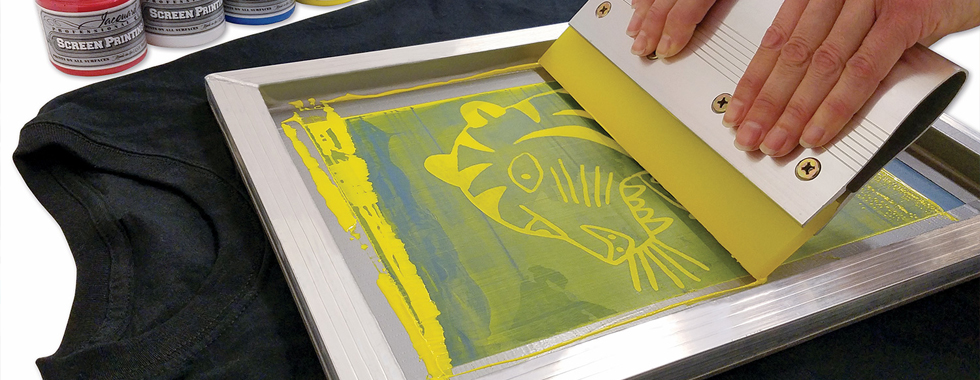ChatGPT said: How 10:9 Design Abilene is serving the community
The Vital Overview to Recognizing Screen Printing and Its Versatile Utilizes
Screen printing has a rich background that goes back to old times, developing right into a sophisticated method made use of throughout numerous industries today. This guide discovers the ins and outs of the screen printing procedure, detailing its applications in marketing, fashion, and home décor - 10:9 Design Abilene. Comprehending these fundamentals can open up innovative possibility for both industrial and imaginative projects. The following areas will certainly expose crucial pointers and methods to improve one's screen printing endeavors
The Background of Screen Printing
Although screen printing has origins that trace back centuries, its evolution mirrors the technical and creative innovations of different societies. Coming from in old China, the strategy was originally used for embellishing textiles and later spread to Japan, where it ended up being integral to Ukiyo-e woodblock printing. The approach shifted to Europe in the 18th century, where it acquired popularity amongst craftsmens and commercial printers. The development of picture emulsion in the 20th century changed screen printing, permitting for even more detailed styles and better efficiency. Musicians like Andy Warhol additionally propelled its appeal, utilizing the medium to create famous jobs that combined commercialism and art. By the late 20th century, screen printing had developed itself as a flexible method, used in fashion, marketing, and art. Today, it proceeds to develop, incorporating digital technology and expanding its applications throughout numerous sectors.
The Screen Printing Refine Explained
Screen printing transforms artistic visions into substantial designs with a collection of exact steps. Originally, a photo is produced and afterwards transferred onto a screen, commonly made from great mesh textile extended over a structure. A light-sensitive solution is put on the screen, which is subjected to light, hardening in locations not covered by the picture. After rinsing the unhardened solution, a stencil is developed.
Next, the screen is put over the substrate, whether it be textile, paper, or an additional product. Ink is after that pushed via the open locations of the pattern using a squeegee, transferring the layout onto the substratum listed below. This procedure can be repeated for multiple shades, needing different screens for each and every shade. The printed item is cured using warm to ensure the ink adheres correctly, resulting in a sturdy, lively design all set for usage.
Kinds Of Screen Printing Techniques

Furthermore, specialized methods, such as discharge screen printing, eliminate color from the material to produce softer prints, while aluminum foil screen printing applies metal foil to attain a glossy surface (10:9 Design near me). Each method provides distinctive characteristics, dealing with various innovative requirements and manufacturing ranges, eventually increasing the opportunities within the screen printing domain name
Applications of Screen Printing in Numerous Industries

Furthermore, the signs and marketing markets use screen printing for developing captivating screens and banners. This technique enables for vibrant shades and detailed layouts that capture interest. In electronic devices, screen printing is utilized for using conductive inks to circuit boards, essential for component connections. The home design industry accepts screen printing to create unique layouts on textiles and wall surface art. In general, screen printing offers as a vital tool across diverse areas, boosting items with personalized and visually enticing graphics.
Tips for Effective Screen Printing Projects
While taking on a screen printing project, cautious focus to information can significantly improve the last outcome. Choosing top quality materials is crucial; this consists of the screen, inks, and substrates. Utilizing appropriate mesh matters can influence ink deposition and detail resolution. Preparation is just as crucial; extensive cleansing of displays and proper exposure times guarantee crisp prints.
Next off, accurate enrollment is crucial for multi-color prints. Utilizing placement tools can help attain specific layering. Furthermore, testing prints on scrap materials prior to manufacturing assists recognize potential problems without wasting resources.

Regularly Asked Concerns
What Materials Are Best for Screen Printing on Material?
Cotton and polyester blends are perfect for screen printing on fabric as a result of their sturdiness and ink absorption. Furthermore, specialized materials like silk or canvas can produce special textures and surfaces, boosting the total layout high quality.
Just how Do I Clean and Maintain Screen Printing Devices?
To cleanse and maintain screen printing tools, one should regularly clean displays with ideal solvents, examine mops for wear, lube relocating parts, and shop all items in a dry, dust-free atmosphere to lengthen their life expectancy.
What Are the Ecological Effects of Screen Printing?
Screen printing can have considerable ecological influences, consisting of chemical waste from solvents and inks, water usage during cleansing procedures, and energy intake. Sustainable practices and eco-friendly products are important for lessening these adverse effects.
Can Screen Printing Be Done in the house Properly?
Screen printing can be efficiently done at home with the ideal products and methods. Hobbyists can create top quality prints, though success depends on their skill degree, tools, and understanding of the process involved.
What Are the Prices Related To Starting a Display Printing Organization?

Beginning a screen printing organization includes costs for equipment, products, and office. Preliminary expenditures typically range from a couple of hundred to a number of thousand bucks, depending on the scale, quality of machinery, and preferred production ability.
Screen printing has a rich background that dates back to old times, advancing right into a sophisticated method utilized throughout different industries today. An additional method, rotating screen printing, employs cylindrical screens, helping with constant printing on textile rolls, therefore boosting efficiency for massive productions. Additionally, specialty strategies, such as discharge screen printing, eliminate color from the material to create softer prints, while aluminum foil screen printing uses metal aluminum foil to achieve a glossy finish. In the fashion field, screen printing is commonly utilized to create lively styles on clothing, making it possible for brands to display their distinct designs. Cotton and polyester blends are suitable for screen printing on fabric due to their sturdiness and ink absorption.